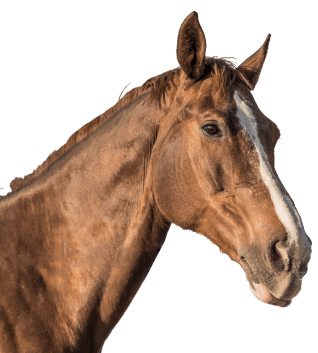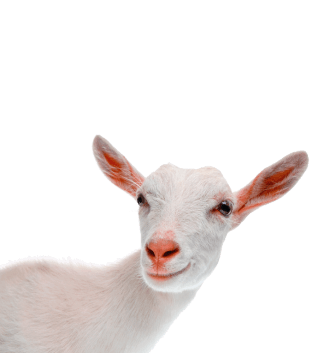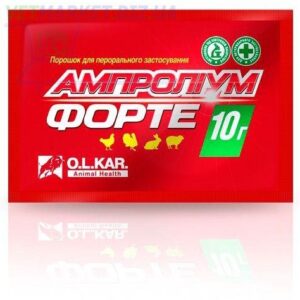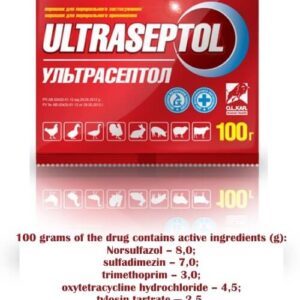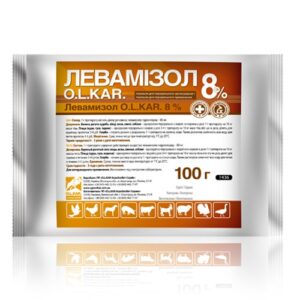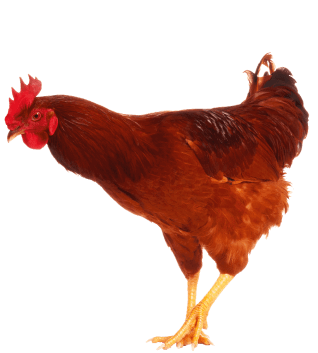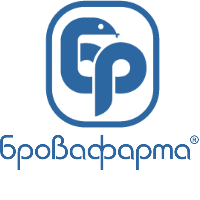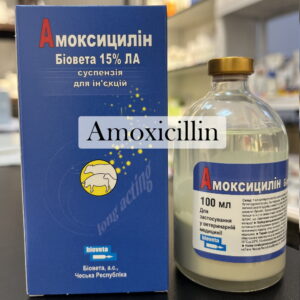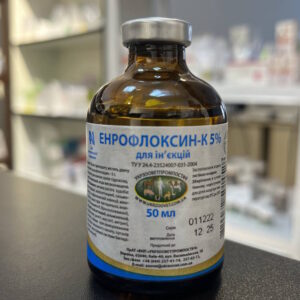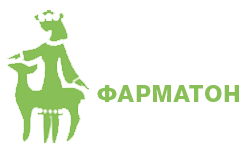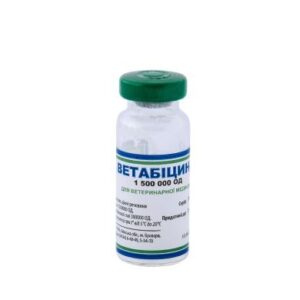“Kanamycin 25% Injection (kanamycin 250 mg) 100 ml” has been added to your cart. View cart

Apramycin 500 mg/g powder 100 g
55.00 € Original price was: 55.00 €.46.31 €Current price is: 46.31 €.

Apramycin solution for injection 50 ml
40.50 € Original price was: 40.50 €.31.79 €Current price is: 31.79 €.
Apramycin sulfate 500 mg/g BF powder, 500 g
112.90 € Original price was: 112.90 €.95.48 €Current price is: 95.48 €.
| Animals | , , , , , |
|---|---|
| Brands | |
| Form |
Description
Apramycin sulfate 500 mg/g powder, 500 g
DESCRIPTION
Storage
1 g of the drug contains:
apramycin sulfate – 500 mg
Description
Light yellow or light brown powder.
Pharmacological properties
An antibiotic of the aminoglycoside group, acts against gram-negative, some gram-positive bacteria, in particular Escherichia coli, Salmonella spp., Pseudomonas spp., Streptococcus spp., Staphylococcus spp., Proteus spp., Bordetella bronchiseptica, Klebsiella. , Brachyspira hyodysenteriae and some species of mycoplasmas – Mycoplasma hyopneumoniae.
The mechanism of antibacterial action is due to inhibition of protein synthesis of microorganisms by irreversible binding to the 30S subunit of ribosomes.
Inactive against anaerobic microorganisms.
When administered orally, it is poorly absorbed from the gastrointestinal tract, which provides a high antibacterial concentration. Apramycin is not biotransformed or metabolized in animals, excreted unchanged, mainly in the feces and partly in the urine.
APPLICATION
Method of application and dosage
The drug is administered orally with drinking water, calves and lambs are given with milk or its substitute 1 time per day in the following doses:
- calves under 6 weeks of age – 40-80 mg (20-40 mg of apramycin sulfate) per 1 kg of body weight, course – 5 days;
- piglets up to 120 days of age – 15-25 mg (7.5 to 12.5 mg of apramycin sulfate) per 1 kg of body weight or 500-1000 mg per 1 liter of water, the course – 7 days;
- lambs up to 6 weeks of age – 20-40 mg (10-20 mg of apramycin sulfate) per 1 kg of body weight, the course – 3-5 days;
- rabbits – 100-200 mg of the drug per 1 liter of water (10-15 mg of apramycin sulfate per 1 kg of body weight), the course – 5-8 days;
- repair young laying hens, broiler chickens – 0.5-1 g per 1 liter of water (25-50 mg of apramycin sulfate per 1 kg of body weight), course – 7 days.
Before use in the calculated daily dose of the drug add 5-10 parts of liquid (water, milk or its substitute), allow the solution to stand for 3-5 minutes, mix and bring the volume to the desired final concentration.
When used with water, the dose is recommended to be mixed with a third or half of the daily norm of drinking water. The solution cannot be prepared in rusty metal containers, as iron ions reduce the activity of the antibiotic.
Reservation
After the last application of the drug, the slaughter of calves for meat is allowed after 28 days. Meat obtained earlier is disposed of or fed to non-productive animals, depending on the conclusion of the veterinarian. Meat of piglets, lambs, rabbits, chickens can be used without restrictions.
Indication
Treatment of animals for diseases caused by gram-negative and some gram-positive microorganisms:
- calves, lambs under 6 weeks of age – gastroenteritis caused by Escherichia coli, Salmonella spp., Pseudomonas spp., Streptococcus spp., Staphylococcus spp., Proteus spp .;
- piglets up to 120 days of age – gastroenteritis, dysentery, edema caused by Escherichia coli, Salmonella spp., Pseudomonas spp., Streptococcus spp., Staphylococcus spp., Proteus spp., Bordetella bronchiseptica, Campylobacter hypira;
- rabbits – mucoid enteropathy, colibacillosis;
- broiler chickens, repair young laying hens – diseases of the gastrointestinal tract and respiratory organs caused by Escherichia coli, Klebsiella spp., Proteus spp., Pseudomonas spp., Staphylococcus spp., Salmonella spp.
*Kilograms to a Pounds conversion table
| Kilograms (kg) | Pounds (lb) | Pounds+Ounces (lb+oz) |
| 0.1 kg | 0.220 lb | 0 lb 3.527 oz |
| 1 kg | 2.205 lb | 2 lb 3.274 oz |
| 5 kg | 11.023 lb | 11 lb 0.370 oz |
| 10 kg | 22.046 lb | 22 lb 0.740 oz |
Contraindication
Do not use in animals with hypersensitivity to apramycin and other aminoglycosides, animals with renal insufficiency, calves older than 6 months, pregnant and lactating animals.
Do not use concomitantly with β-lactam antibiotics due to decreased antibacterial activity and other aminoglycosides due to possible enhancement of nephrotoxic effects.
Do not use laying hens, the eggs of which are eaten by humans, and young hens four weeks before laying eggs.
Storage conditions
In a dry, dark place, out of reach of children at a temperature of +4 to +25 ° C.
Use an aqueous solution of the drug for 3 days, a solution based on milk or its substitute – on the day of preparation.
Expiration date
2 years.
Delivery
We offer FREE SHIPPING WORLDWIDE for all products. Please check out shipping policy.




